The article evaluates six top eCommerce platforms for small to medium businesses in 2025:
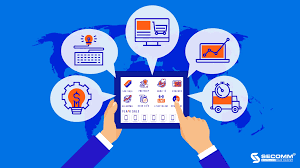
- Shopify – Best for getting up and running quickly
- Pros: Easy setup, extensive app store, strong support
- Cons: Can get expensive with add-ons
- Pricing: From $39/month plus 2.9% + $0.30 per transaction
- Square – Best for selling both in-person and online
- Pros: Integrates with Square POS, good for offline businesses expanding online
- Cons: Limited themes and customization
- Pricing: Free (with Square branding) or from $29/month
- Ecwid by Lightspeed – Best free option with room to grow
- Pros: Solid free tier, affordable paid plans
- Cons: Not as polished as Shopify in some areas
- Pricing: Free for up to 5 products; from $25/month for more features
- BigCommerce – Best for large-volume sellers
- Pros: Enterprise-level features for SMBs, multichannel selling
- Cons: Might be overkill for very small businesses
- Pricing: From $39/month, sales caps at different tiers
- WooCommerce – Best for adding a shop to WordPress sites
- Pros: WordPress integration, extensive plugin options
- Cons: Requires WordPress knowledge
- Pricing: Free plugin (hosting costs apply)
- Wix – Best for building a complete business website with store
- Pros: Strong website builder with solid eCommerce features
- Cons: Not as eCommerce-focused as others
- Pricing: From $43/month
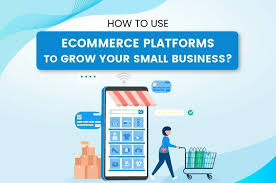
Comprehensive Analysis of eCommerce Website Builders (2025)
Key Comparison Factors
- Target Business Size & Type
- Ease of Use & Setup
- Pricing Structure
- Customization & Design Options
- Feature Set & Extensibility
- Payment Processing
- Multi-channel Capabilities
- Unique Selling Points
Shopify
Best For: Businesses wanting quick setup with room to scale

- Strengths: Intuitive interface, massive app marketplace (2,300+ themes available), comprehensive documentation, strong community support, AI features (Magic and Sidekick), robust POS options
- Weaknesses: Costs can escalate with apps, 2% transaction fee if not using Shopify Payments
- Ideal User: Growth-focused retailers needing a complete, scalable solution
- Value Assessment: Premium pricing but justified for businesses prioritizing ease of use and growth potential

Square
Best For: Businesses with physical presence expanding online
- Strengths: Seamless offline/online integration, free entry point, integrated inventory across channels, strong mobile capabilities
- Weaknesses: Limited customization compared to dedicated platforms, fewer design options
- Ideal User: Brick-and-mortar retailers, market vendors, or service providers expanding online
- Value Assessment: Excellent value for businesses already in the Square ecosystem
Ecwid by Lightspeed
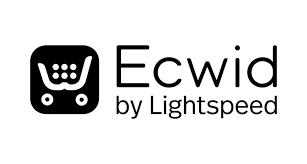
Best For: Budget-conscious businesses testing eCommerce
- Strengths: Free tier for testing, no additional transaction fees, integrates with existing websites, social selling capabilities
- Weaknesses: Less polish than premium options, Lightspeed acquisition may change features
- Ideal User: Small businesses on tight budgets or entrepreneurs testing products
- Value Assessment: Best cost-to-feature ratio for small sellers

BigCommerce
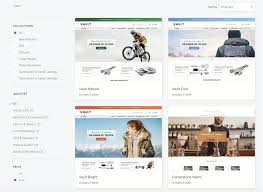
Best For: Established businesses with significant sales volume
- Strengths: Enterprise features at SMB prices, built-in multi-channel selling (Amazon, eBay, Walmart, Facebook), automatic tax and shipping setup
- Weaknesses: Premium themes are expensive ($100-400), sales caps on lower tiers
- Ideal User: Established businesses with $50K+ annual sales looking for sophisticated features
- Value Assessment: High value for businesses already selling significant volume
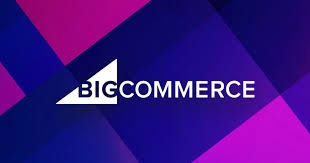
WooCommerce

Best For: WordPress users or those wanting maximum control
- Strengths: Complete WordPress integration, unlimited customization, large extension marketplace, familiar interface for WordPress users
- Weaknesses: Requires WordPress knowledge, potentially higher technical overhead
- Ideal User: WordPress-familiar businesses, technical users wanting full control
- Value Assessment: Excellent value for WordPress users, potentially higher total cost when factoring hosting and extensions

Wix

Best For: Businesses needing a full website with eCommerce functionality
- Strengths: Excellent website builder with AI capabilities, intuitive interface, balance of eCommerce and content features
- Weaknesses: Not as eCommerce-focused as dedicated platforms
- Ideal User: Service businesses, creators, or brands where content is equally important to sales
- Value Assessment: Good value for businesses needing both strong content and selling capabilities
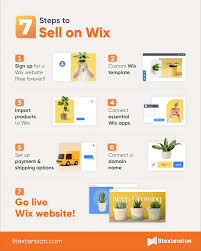
Market Position Analysis
- Premium Full-Service: Shopify and BigCommerce compete for businesses wanting comprehensive solutions, with Shopify winning on ease of use and BigCommerce on enterprise features at lower cost
- Channel Integration: Square dominates for physical-first businesses, while BigCommerce leads for online marketplace integration
- Budget Options: Ecwid offers the best free tier, while WooCommerce provides best value for those willing to manage their own hosting
- Website-First Approach: Wix leads for businesses where content and brand are equally important to sales

Emerging Trends
- AI Integration: Increasing adoption of AI for site building (Wix), content generation (Shopify’s Magic), and analytics (Shopify’s Sidekick)
- Omnichannel Focus: All platforms expanding capabilities for selling across multiple channels
- Reducing Technical Barriers: Platforms simplifying traditionally complex tasks (taxes, shipping, inventory)
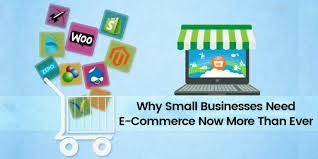
Recommendation Framework
- Just Starting Out: Ecwid (free tier) or Square (if also selling in-person)
- Ready to Invest: Shopify (ease of use) or WooCommerce (if WordPress-savvy)
- Established Business: BigCommerce or Shopify
- Content-Heavy Business: Wix or WooCommerce
- Physical-First Business: Square
This analysis provides a framework for businesses to select the right platform based on their specific needs, technical capabilities, and growth stage.Retry

Comprehensive Analysis of the Best Website Builders in 2025
Based on the information provided in the article, here’s an in-depth analysis of the best website builders for eCommerce, focusing on their strengths, limitations, and ideal use cases.
Shopify
Core Strength: Getting businesses online quickly with a complete solution
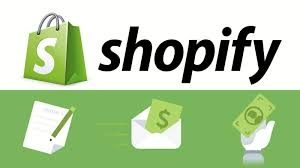
Deep Analysis
- Platform Maturity: With 18+ years in the market and millions of stores, Shopify offers proven stability
- Onboarding Experience: Three-day credit card-free trial with guided setup process makes it exceptionally beginner-friendly
- Extensibility: The platform’s true power comes from its ecosystem – 13 free themes, 218+ paid themes, 2,300+ third-party themes, and extensive app marketplace
- AI Integration: New “Magic” features for generating product descriptions and “Sidekick” AI assistant for sales analytics show forward-thinking development
- Technical Balance: Achieves the difficult balance of being accessible to beginners while offering depth for advanced users
Limitations
- Cost Structure: While base price is competitive ($39/month), the platform encourages a modular approach that can quickly increase costs through add-on apps
- Gateway Lock-in: 2% transaction fee when not using Shopify Payments creates financial pressure to use their payment solution
Ideal For
- Small to medium businesses prioritizing quick launch and scalability
- Retailers who value an intuitive interface over absolute cost minimization
- Businesses expecting to grow who want a platform that won’t become limiting
Square
Core Strength: Bridging offline and online retail seamlessly
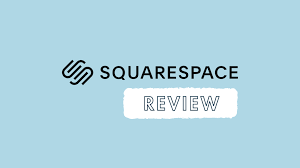
Deep Analysis
- Unified Commerce Approach: Square’s standout feature is treating web store as “just another location” alongside physical retail points
- Acquisition Strategy: The integration of Weebly (acquired 2018) provides a solid foundation for web building capabilities
- Business Model: Square’s focus is on the payment processing side, making the web store features more of a gateway to their core revenue stream
- Onboarding Quality: Detailed questionnaire approach to setup shows understanding of different business models
Limitations
- Design Flexibility: More limited than dedicated website builders, particularly for free users
- Identity Confusion: Some Weebly-branded elements remain, potentially confusing users
Ideal For
- Businesses with existing physical presence expanding online
- Retailers who sell at temporary locations (markets, pop-ups) and need inventory synchronization
- Small businesses prioritizing operational simplicity over design flexibility
Ecwid by Lightspeed
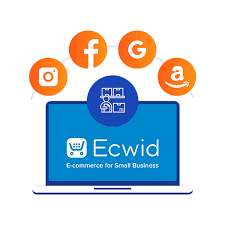
Core Strength: Low barrier to entry with room to grow
Deep Analysis
- Adoption Strategy: Free tier for 5 products creates an easy on-ramp for hesitant businesses
- Integration Philosophy: Designed to work alongside existing websites rather than replace them
- Corporate Evolution: Lightspeed acquisition signals potential future integration with more robust retail solutions
- Fee Transparency: No additional transaction fees beyond payment gateway is a genuinely user-friendly approach
Limitations
- Polish Level: Interface and features less refined than premium competitors
- Uncertain Future: Acquisition by Lightspeed creates some uncertainty about long-term direction
Ideal For
- Businesses testing eCommerce viability before significant investment
- Sellers with existing websites looking to add simple shopping capabilities
- Budget-conscious entrepreneurs with small product catalogs
BigCommerce
Core Strength: Enterprise capabilities scaled for SMBs

Deep Analysis
- Market Positioning: Deliberately targets established businesses (considers <$50K/year “just starting”)
- Operational Focus: Emphasis on sales tax and shipping configuration during onboarding reveals enterprise-level priorities
- Channel Strategy: Superior multichannel integration (Amazon, eBay, Walmart, Facebook) with automated synchronization
- Scalability Model: Tiered approach with sales caps ($50K/year on Standard, $180K/year on Plus) encourages platform growth alongside business growth
Limitations
- Theme Investment: Premium themes ($100-400) represent significant additional investment
- Complexity: Less suitable for true beginners due to assumption of business experience
Ideal For
- Established businesses with significant sales volumes
- Merchants selling across multiple marketplaces needing centralized management
- Growing businesses expecting to exceed $50K in annual sales
WooCommerce
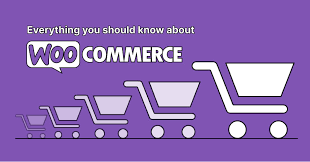
Core Strength: Seamless WordPress integration with maximum control
Deep Analysis
- Ecosystem Leverage: Taps into WordPress’s massive market share and familiarity
- Interface Consistency: Uses identical publishing interface to standard WordPress, minimizing learning curve for WP users
- Technical Philosophy: Embraces WordPress’s extensibility model with plugins and customization
- Cost Structure: Free core offering shifts costs to hosting, extensions and implementation
Limitations
- Technical Requirements: Requires WordPress knowledge or willingness to learn
- Hidden Complexity: “WordPress quirks” mentioned suggest underlying technical challenges
Ideal For
- Existing WordPress users with established sites
- Technically-inclined users seeking maximum control
- Businesses with in-house WordPress expertise
Wix
Core Strength: Balanced website builder with solid eCommerce capabilities

Deep Analysis
- Platform Balance: Unique position as primarily a website builder with strong eCommerce integration
- AI Adoption: Heavy investment in AI for site building, content generation, and SEO optimization
- Feature Completeness: Offers comprehensive eCommerce features (order tracking, sales tax, abandoned cart recovery) even on lower tiers
- Expansion Path: Point-of-sale solution shows ambition to compete in omnichannel space
Limitations
- Identity Tension: Lacks the singular eCommerce focus of dedicated platforms
- Chatbot Onboarding: AI-driven signup process may be innovative but not necessarily more efficient
Ideal For
- Businesses where content/branding is equally important to sales
- Users wanting a familiar website builder interface with eCommerce capabilities
- Merchants needing a complete web presence beyond just a store
Overall Market Analysis
The eCommerce website builder market in 2025 shows clear segmentation:

- Full-Service Platforms (Shopify, BigCommerce): Comprehensive solutions with different emphasis (Shopify on simplicity, BigCommerce on features)
- Channel Integrators (Square): Focused on bridging physical and digital retail
- Add-On Solutions (Ecwid, WooCommerce): Designed to bring eCommerce to existing web properties
- Hybrid Builders (Wix): Website builders with robust eCommerce capabilities
The market continues to evolve with increasing AI integration, omnichannel capabilities, and efforts to reduce technical barriers to sophisticated eCommerce functionality.
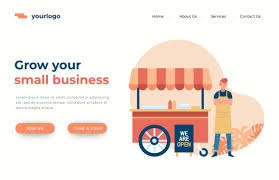
How to Avoid E-commerce or Retail Scams in Singapore

Based on the article, here are practical strategies to protect yourself from online shopping scams in Singapore:
1. Stick with Recognized Retailers
- Use established e-commerce platforms with built-in safeguards
- Check the E-commerce Marketplace Transaction Safety Ratings from the Inter-Ministry Committee on Scams
- Verify website URLs carefully for misspellings or suspicious characters
- Be cautious of phishing attempts via email, SMS, or social media
2. Verify Seller Legitimacy
- Look for platform verification badges and seller ratings
- Pay attention to user badges on platforms like Carousell that indicate verified accounts
- Read multiple customer reviews before purchasing
- Research the seller’s history and reputation

3. Recognize Warning Signs
- Be skeptical of deals that seem too good to be true
- Avoid sellers who create artificial urgency or limited-time offers
- Be wary if a seller pressures you to act quickly
- Never agree to discuss or complete transactions outside the platform
4. Use Secure Payment Methods
- Utilize in-platform payment systems with buyer protection
- Look for escrow services (like Shopee Guarantee) that hold funds until you receive and verify your purchase
- Prefer credit cards over direct bank transfers when possible
- Never share one-time passwords or banking credentials

If You Suspect a Scam
- Report it immediately to the platform and authorities
- Inform your bank if financial information was compromised
- Document all communication and evidence
- Share your experience to warn others
According to the Singapore Police Force, e-commerce scams were the most reported scam type in 2024, with losses of at least $17.5 million. Stay vigilant, as even tech-savvy individuals can become victims.

Examples of Shopping Scams and Their Resolutions
While the article doesn’t detail specific scam examples with resolutions, I can share common e-commerce scam scenarios and how they might be resolved based on the information provided:
Example 1: Fake Website Scam
Scenario: A shopper clicks on a social media ad for heavily discounted luxury goods. The website looks professional but is actually a spoof of a legitimate retailer.
How it happens: The scammer creates a website that mimics a popular brand, often with a slight URL variation (like “amazzon.com” instead of “amazon.com”).

Resolution:
- The victim reports the incident to police and their bank immediately
- They file a dispute with their credit card company for fraudulent charges
- The police track the website for potential shutdown
- The victim warns others by reporting to the National Crime Prevention Council
Example 2: Off-Platform Payment Scam
Scenario: A seller on Carousell offers a popular gaming console at an attractive price but insists on payment via direct bank transfer outside the platform.
How it happens: After payment, the seller disappears without delivering the item.

Resolution:
- The victim reports the scammer to Carousell and the police
- They provide all communication evidence and transaction details
- While recovery of funds is difficult with direct bank transfers, the case helps authorities identify scam patterns
- The platform may ban the scammer’s account

Example 3: False Advertising/Defective Product
Scenario: Similar to Brian Yee’s experience in the article, a shopper purchases perfume that arrives smelling only of alcohol despite being advertised as authentic.
How it happens: Sellers misrepresent products with false descriptions or photos.

Resolution:
- The buyer documents the issue with photos/videos
- They contact the seller directly with evidence
- If unresolved, they escalate to the platform’s dispute resolution system
- For larger amounts, they might file a complaint with CASE (Consumers Association of Singapore)
- The platform might refund through buyer protection programs
Example 4: Urgency/Limited Time Scam
Scenario: A shopper receives a message claiming “Your account will be locked unless you verify payment information immediately” with a link.
How it happens: Creates false urgency to bypass usual caution.
Resolution:
- The potential victim recognizes the red flag of artificial urgency
- They check directly with the official platform through the app/official website
- They report the phishing attempt to the platform and authorities
- No financial loss occurs due to vigilance
Best Practices for Resolution

- Document everything: Save screenshots, messages, and transaction details
- Act quickly: Report to authorities and financial institutions immediately
- Use platform protection: Make use of dispute resolution systems
- Learn for next time: Become familiar with common scam patterns
- Share experiences: Help others avoid similar scams
Remember that according to the Singapore Police Force, prevention is better than trying to recover lost funds, as many scam victims never get their money back.
Maxthon
In the contemporary world of digital interaction, ensuring your safety while exploring the extensive realms of the internet has become increasingly paramount. The necessity of choosing a web browser that places a high value on security and privacy is more important now than ever. Among the various options available, the Maxthon Browser stands out as an exceptional choice that caters to these essential requirements—all at no cost to the user. This innovative browser is equipped with an impressive array of built-in functionalities, including an Adblocker and tools designed to thwart tracking, both of which play a significant role in bolstering your online privacy.

Maxthon is deeply dedicated to curating a browsing experience that not only prioritizes safety but also honours the privacy of its users. With a keen emphasis on safeguarding personal information and online activities from a myriad of threats, Maxthon employs a variety of practical strategies aimed at protecting user data. By leveraging advanced encryption techniques, the browser ensures that your sensitive information remains confidential and secure throughout your internet browsing sessions.
When it comes to advocating for online privacy, Maxthon truly shines. The browser is thoughtfully designed with a host of features specifically tailored to enhance privacy, such as ad blockers, anti-tracking capabilities, and an incognito mode. These tools work in unison to block disruptive advertisements and prevent tracking scripts from surveilling your online actions. Consequently, users are afforded the opportunity to navigate the web within a more secure environment. The incognito mode further fortifies this sense of security by allowing individuals to browse without leaving behind any digital footprints or traces on their devices.
Maxthon’s steadfast dedication to user privacy and security is evident in its regular updates and continuous improvements. These enhancements are crucial for identifying and addressing potential vulnerabilities, ensuring that Maxthon remains one step ahead of emerging threats in the ever-evolving digital landscape. This commitment to providing a reliable private browsing experience makes Maxthon a commendable choice for anyone seeking enhanced online privacy.
In summary, the Maxthon Browser prioritizes user safety and embodies a profound respect for individual privacy, making it invaluable for navigating today’s complex online environment.
